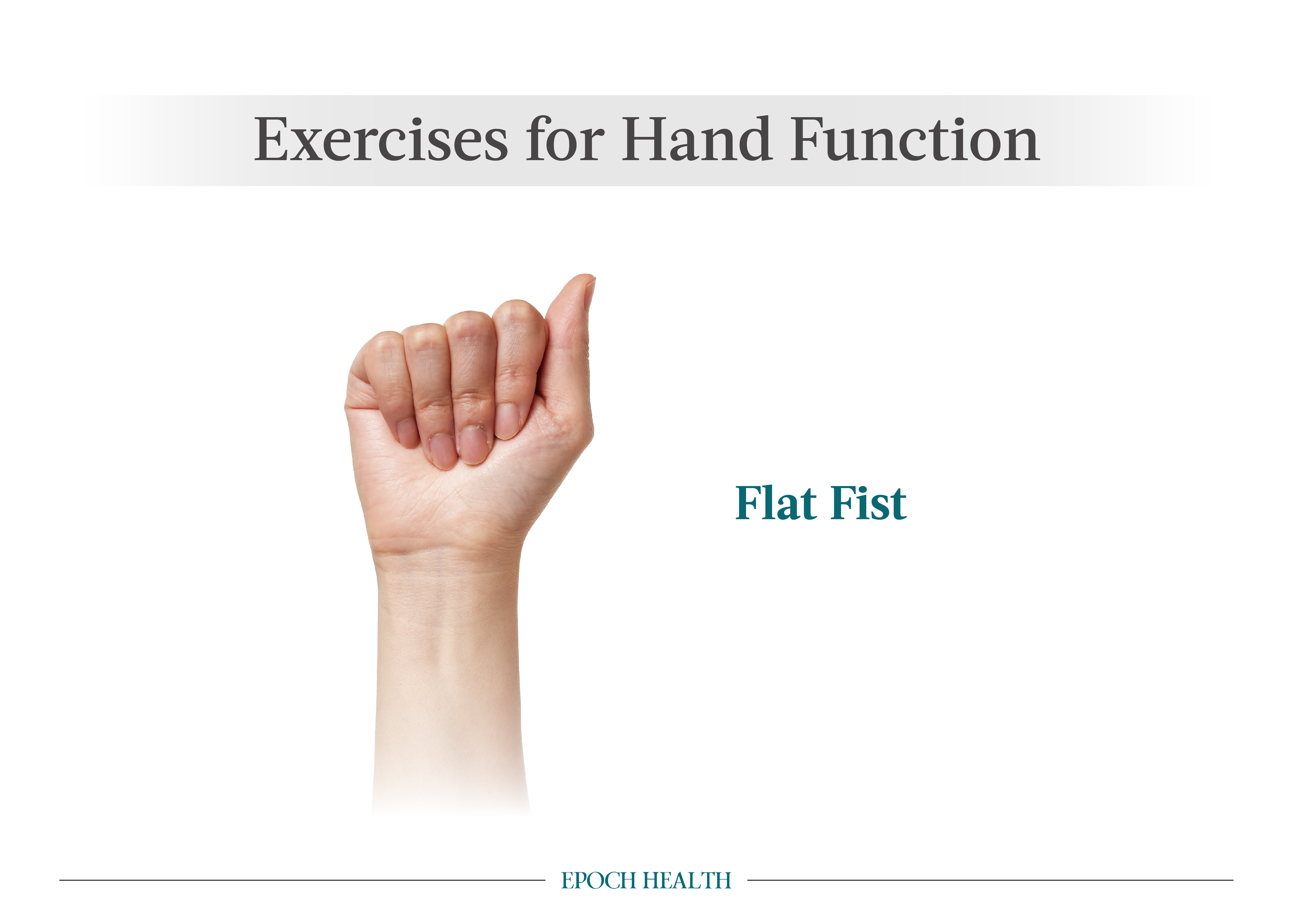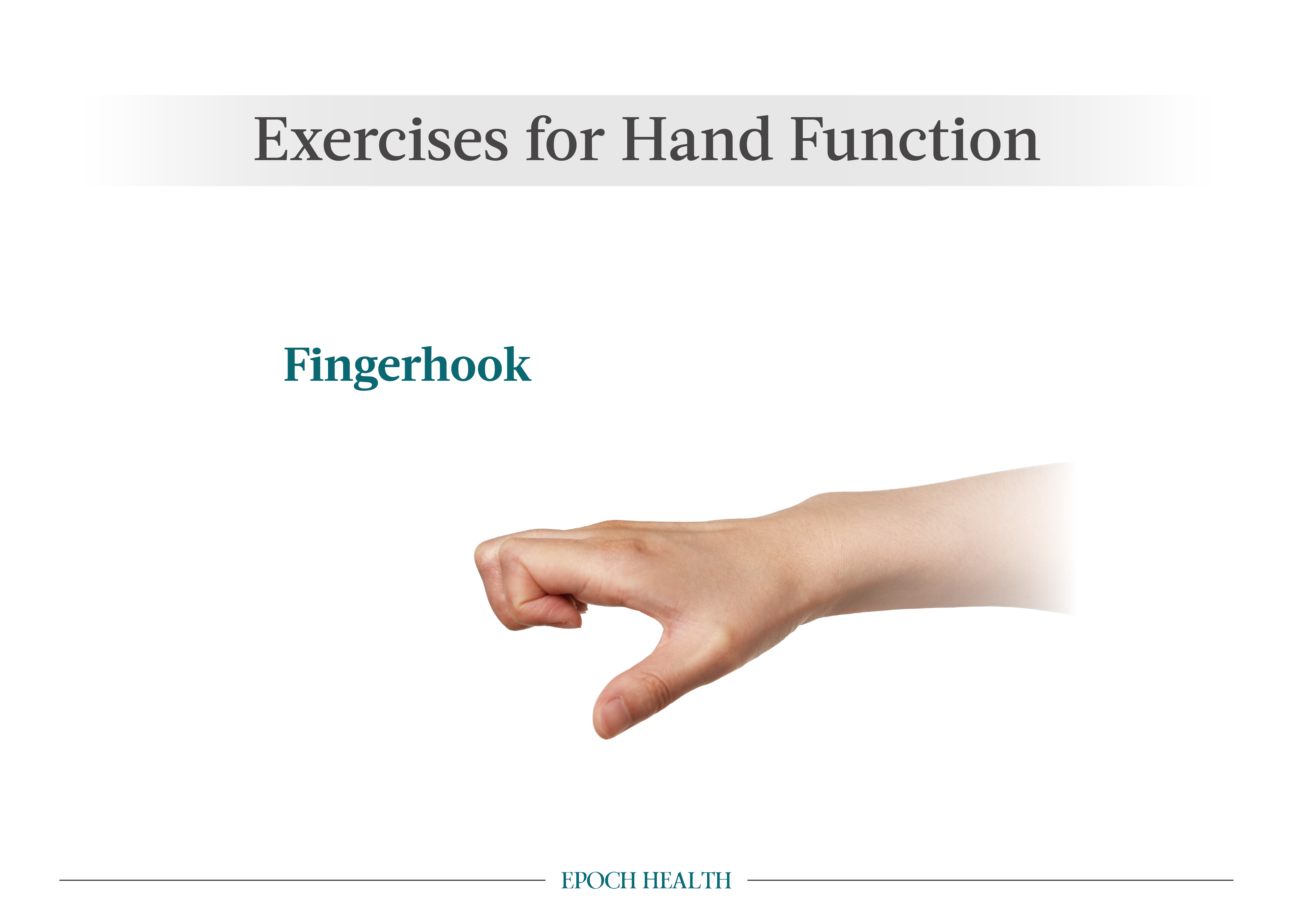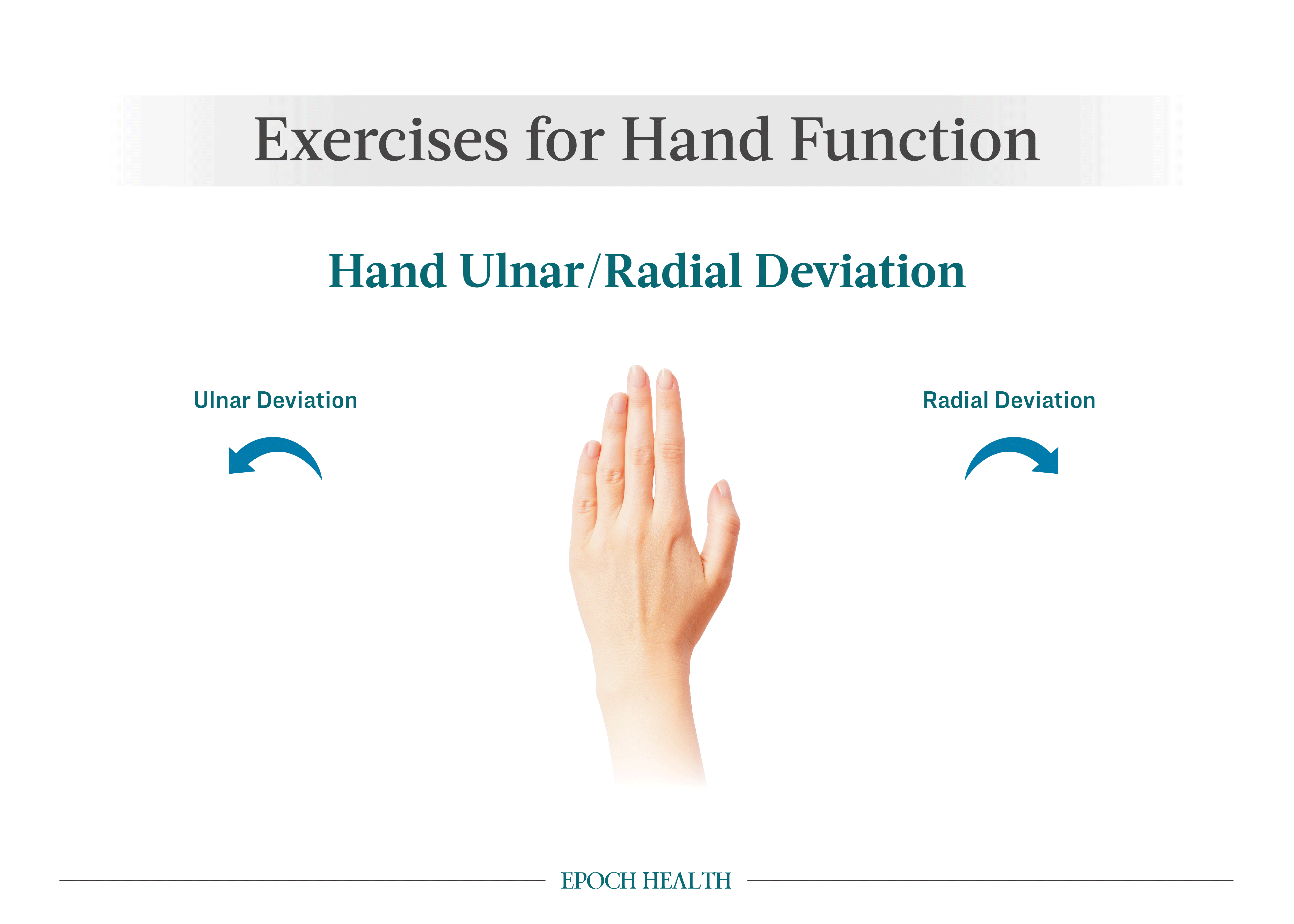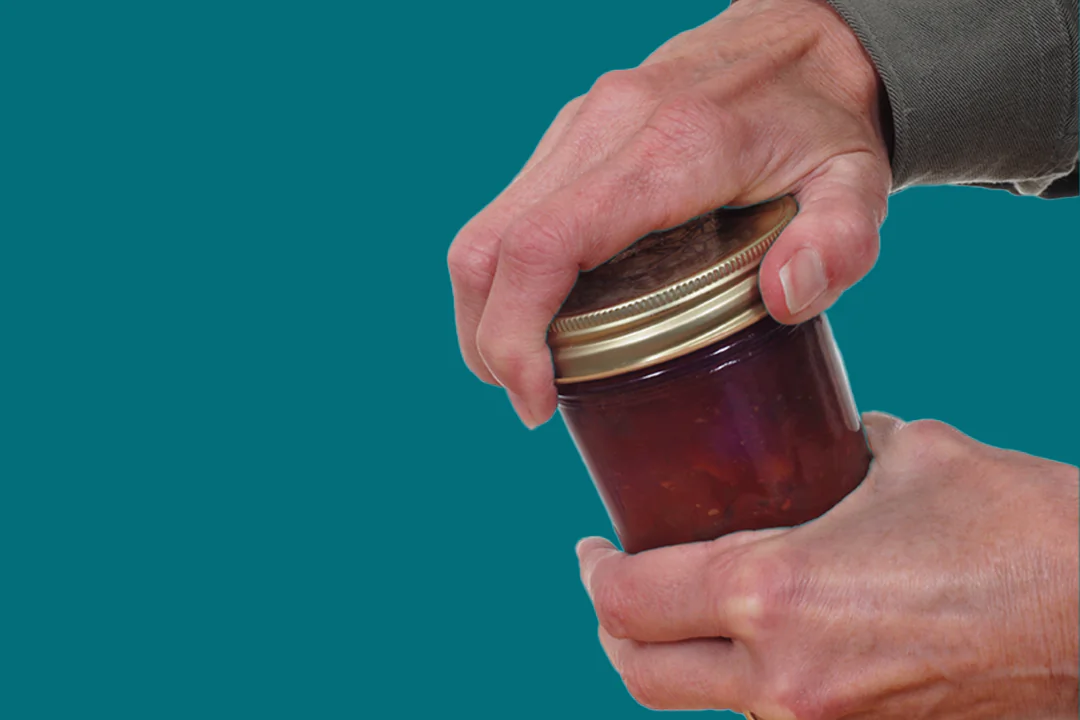Beyond the pain associated with advancing arthritis, the single biggest complaint I hear is the frustration with trying to open jars and bottles with screw-down lids or caps.
“Arthritis can make the twisting motions associated with opening containers quite painful, and many people with arthritis tend to limit the number of things they do with their hands, which contributes to weakness,” occupational therapist Elizabeth Parris told The Epoch Times.
Between the weakness and the pain, opening things like jars and bottles can become surprisingly difficult, she said. It can often feel like manufacturers glue or weld the lids onto the containers.
Thankfully, adaptive devices in conjunction with hand-strengthening exercises can significantly improve hand function.
[series_posts_list][/series_posts_list]
Devices to Help Open Containers
The following “assistive devices” can maximize your hand strength during twisting motions and increase your ability to open jars and bottles:
- Rubber bands: In a pinch, placing a rubber band around the lid of a jar or bottle can increase your grip. Wide rubber bands that come on store-bought vegetables usually work well.
- Nonslip grips: Nonslip grips are pads that can fit around the entire top of jars and bottles to accommodate your entire hand, allowing you to maximize your twisting force.
- Jar/bottle grippers: Grippers are tools that can function like pliers or can be affixed to the container being opened.
- Dycem: Dycem falls into the category of an enhanced grip surface that approaches stickiness. In therapy, we train patients to place containers on a piece of Dycem while they use another piece of Dycem on the lid. “Dycem can serve double duty with opening jars and bottles because it can stabilize the entire container while allowing you to increase your grip on the lids,” said Ms. Parris. Dycem is washable and retains its “grippiness” for a long time.
- One-handed openers: These devices stabilize a container, allowing all the effort to be placed on the lid. Nonslip pads or Dycem can effectively serve this role.
Most of these grip aids are inexpensive and are readily available at grocery or department stores.
5 Exercises to Increase Hand Strength
Containers can be difficult to open with stiff and painful hands. In rehab, we commonly say that “motion is lotion.” These five exercises can increase your hand strength and improve flexibility.
1. Flat Fist
This exercise involves the knuckle joints, clinically referred to as the metacarpophalangeal joints (MCP) and proximal interphalangeal joints (PIP), or middle joints of the fingers. The PIP joints and their associated muscles contribute substantially to hand and fist strength.

Step 1: Start with your elbow on a table and your arm and fingers pointing straight up toward the ceiling.
Step 2: Slowly bend your fingers at the MCP joints (first knuckle) while keeping your other knuckles straight. Bend them as far as you can and hold them firmly against the endpoint of travel.
Step 3: Carefully bend the PIP joints (middle knuckles) until your fingers touch the base of your palm. Forcefully squeeze your fingers into your palm.
Step 4: Hold this position for three seconds, then extend your fingers straight up.
Step 5: Perform this movement 12 times per set, and do three sets.
Be sure to isolate the bending to the first joint while keeping the rest of your finger joints straight. Maintaining strict form makes this exercise highly effective, but it can take practice to master.
2. Intrinsic Plus
This exercise focuses on the flexibility of the metacarpal-phalangial (MP) joints, also known as the knuckle joints. It helps to strengthen the intrinsic hand muscles, which contribute to MP flexion.

Step 1: Start with your elbow on a table and your arm and fingers pointing straight up toward the ceiling.
Step 2: Slowly bend your fingers at the first knuckle while keeping your other knuckles straight. Bend them as far as you can, taking one second to move from straight to fully bent. Push firmly into the endpoint, and hold for three seconds, being careful not to provoke pain.
Step 3: Return your fingers to an upright position with fingers extended straight up.
Step 4: Perform this movement 12 times per set and do three sets.
3. Fingerhook
This exercise involves the third set of joints, the distal interphalangeal (DIP) joints. It’s excellent for maintaining the flexor tendons that cross the wrist and the tendons involved with finger flexion and extension.

Step 1: Start with your elbow on a table, your hand open, and your fingers pointing toward the ceiling.
Step 2: Slowly bend your fingers at the PIP and DIP joints, leaving the MCP joints extended. Try to touch your fingerprints to the base of your fingers so that the second and third joints of your fingers are completely bent. Squeeze firmly to maximize muscle contraction.
Step 3: Hold for three seconds before straightening your fingers.
Step 4: Perform this movement 12 times per set and do three sets.
This exercise can initially cause tension in the hand, so ease into it. After a few repetitions, the soft tissues involved in the movement should stretch, and the movement will become more comfortable. Be sure to avoid pushing into pain.
4. Jar/Can Lift
This is a great practical exercise for grip strengthening without requiring a lot of joint movement. It simply requires picking up a jar or can and suspending it for a short time.

Step 1: Stand or sit and place a can or jar on a counter. You can start with a small can, but my advice is to use the largest can or jar that you can comfortably manage.
Step 2: Reaching from above, pick up the top of the can or jar with your fingertips and hold it firmly.
Step 3: Continue holding for approximately 30 seconds, then put it down.
Step 4: Each 30-second hold counts as one repetition; try to perform 12 repetitions per side.
This exercise can be fatiguing, but staying with it will pay quick dividends. As you grow stronger, you can increase the intensity by increasing the size of the can or jar.
5. Radial/Ulnar Deviation
This tabletop exercise can help you strengthen the twisting motions of your hands.

Step 1: Stand and place your hand on a table or countertop with your fingers together and your elbow by your sides.
Step 2: While pushing firmly down on the countertop, begin the exercise by turning your hand inward as far as it can go. Keep your elbow tucked in and maintain firm downward pressure.
Step 3: After rotating your hand inward as far as you can, reverse the direction and move your hand outward as far as you can in the other direction.
Step 4: This counts as one repetition. Try to do 12 repetitions per set and three sets per hand.
You can perform these exercises with either one hand at a time or both hands at the same time. You can also do this exercise with your fingers spread apart.
Regular exercise and grip enhancers can improve your ability to open jars and bottles while helping you maintain functional independence.
[note label=”Next” title=”” hyperlink=”” description=”Leg weakness, often associated with arthritis, can limit mobility. Specific exercises can increase your leg strength and enhance your independence.”][/note]
Views expressed in this article are the opinions of the author and do not necessarily reflect the views of The Epoch Times. Epoch Health welcomes professional discussion and friendly debate. To submit an opinion piece, please follow these guidelines and submit through our form here.



